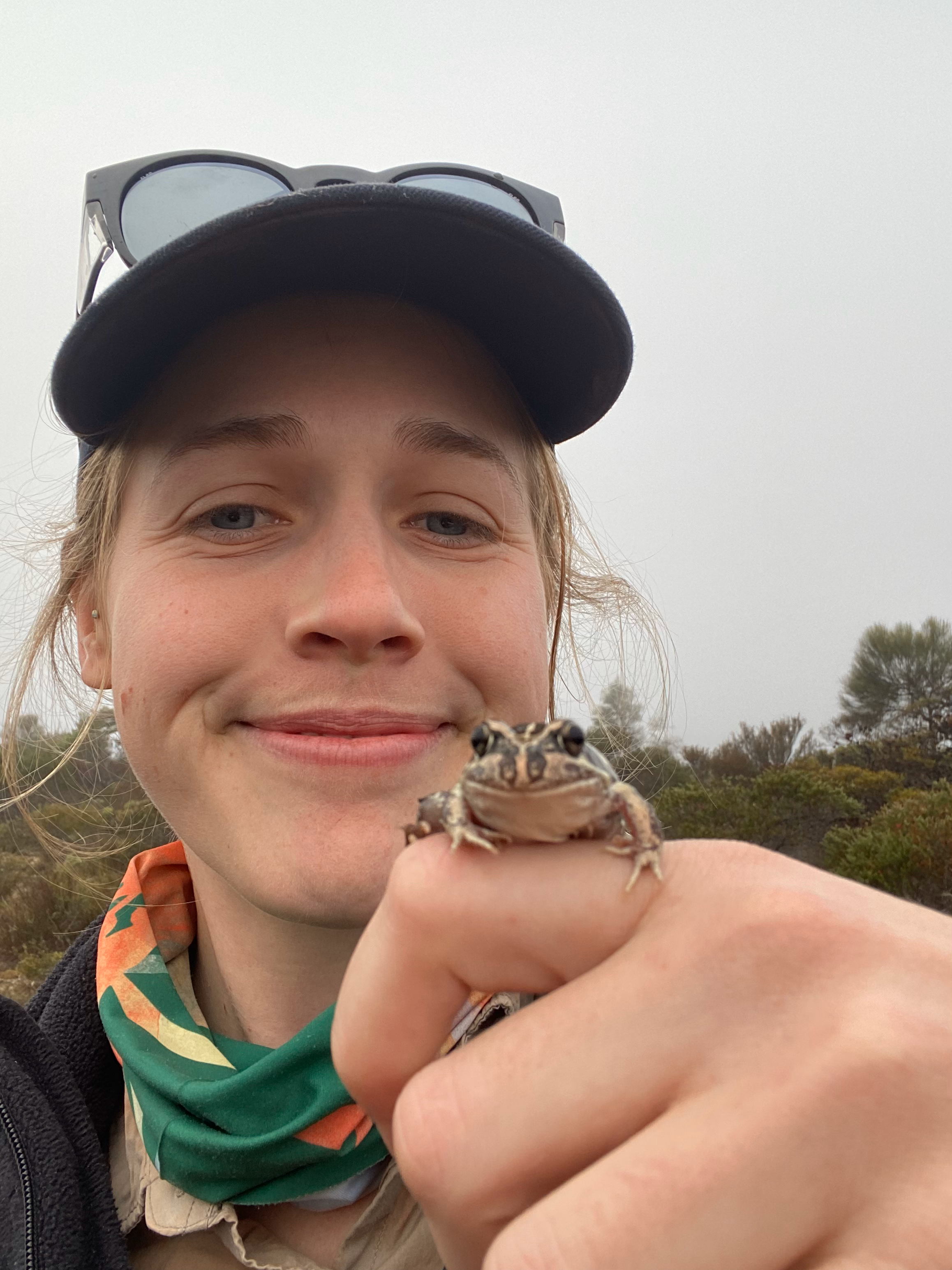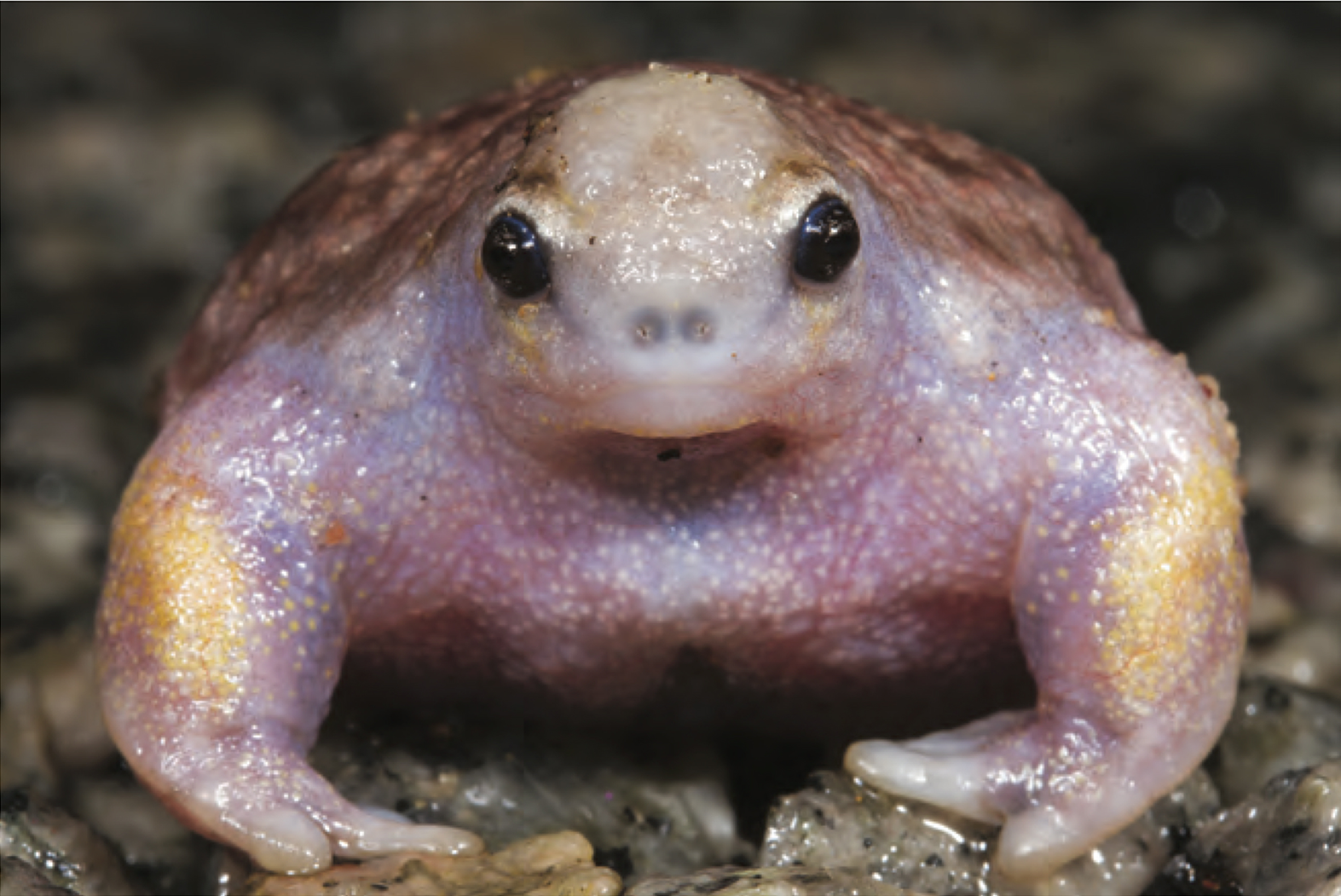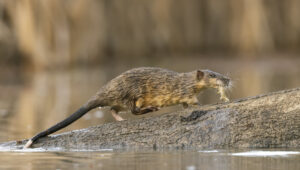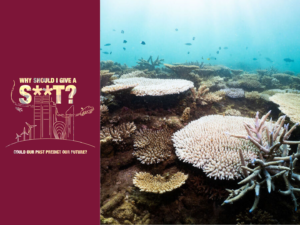Two black beady eyes. A short rounded head. Four stumpy legs and a face only a mother (or a herpetologist) could love. Meet the turtle frog!
Endemic to the Perth region of WA, the turtle frog (Myobatrachus gouldii) is a small, chubby and utterly adorable frog that’s full of evolutionary surprises.
TEENAGE MUTANT NAKED TURTLE
Discovered in 1841, the turtle frog was named after its shell-less turtle-like appearance.
With plump bodies and stout little legs, they’re right at home waddling across the sandy soils of the Banksia Woodlands.
Caption: Prime turtle frog real estate
Credit: Banksia heathland by Laurent Marsol CC BY-SA 3.0
But it’s their faces that really steal the show – with those tiny eyes and cartoonish smile, they could be Jabba the Hutt’s miniature cousin.
MOIST, UNBOTHERED, IN THEIR LANE, FLOURISHING
Turtle frogs are monotypic, meaning there is no other species like them. They are the only members of the Myobatrachus genus and diverged from their closest relative around 10 million years ago during the Miocene.
The dry, harsh cycles of this time and the ancient, worn-out soils of WA turned the region into an evolutionary playground. This pushed amphibians to develop some of their weirdest and most wonderful adaptations to survive.
The South West of WA became a global biodiversity hotspot. Over 80% of the frog species in this region aren’t found anywhere else on the planet.
Caption: Unlike other burrowing frogs, turtle frogs use their forearms to dig
Credit: Myobatrachus gouldii (lateral view) by Stephen Zozaya CC BY 2.5
YES, DIGGITY
Built like a mini bulldozer, turtle frogs don’t hop like other frogs. Instead, they were born to dig and spend most of their time underground.
While most burrowing frogs use their hind legs to shimmy backwards into their burrows, turtle frogs use their broad shoulders and muscular forearms to tunnel headfirst into the sand.
Who even needs the gym when you have sand hills to burrow through?
TADPOLES? FROGET ABOUT IT!
The turtle frog dating scene involves plenty of digging and not much romance.
After a balmy summer storm, eligible bachelors emerge from their burrows calling out to find a mate.
Their calls sound like someone stepping on creaky floorboards – sexy. If a female likes what she hears, she will dig underneath the male until they are locked in a sandy embrace.
Once coupled up, they burrow up to 1.5 metres underground where they remain together for a few months until it’s mating time.
Caption: The sandy fortress of a turtle frog
Credit: Ross McGibbon @ross_mcgibbon_photography
Females will lay a clutch of five to 50 eggs, nestled among the moist sand.
Most frogs go through metamorphosis. The female will lay eggs into a body of water where they remain until tadpoles hatch and slowly morph into fully formed frogs.
This is a very energy-intensive process that requires plenty of water for tadpoles to succeed in their quest to become frogs.
Turtle frogs have skipped this stage altogether and emerge from the egg as fully formed froglets.
This leapfrog development is perfect for life in a habitat where water is scarce.
Caption: The typical frog life cycle – turtle frogs, however, undergo direct development, meaning they skip the tadpole phases (a, b, c, d) completely and hatch from an egg fully formed (e)
Credit: Public Domain
BEFORE THEY CROAK IT
As the planet heats up and cities spread, turtle frogs are becoming more vulnerable to frequent bushfires and urban development.
Preserving areas of the Banksia Woodlands that have remained unburnt for extended periods may be crucial to maintain healthy turtle frog populations.
So if you dig turtle frogs or are still curious about these quirky amphibians, download the FrogID app and record their calls on your next bush walk.
Your efforts help researchers track populations, understand habitat use and advocate for amphibian conservation.
Turtle frogs are perfectly adapted for life beneath the sand – and continued research will help ensure they stay there.









